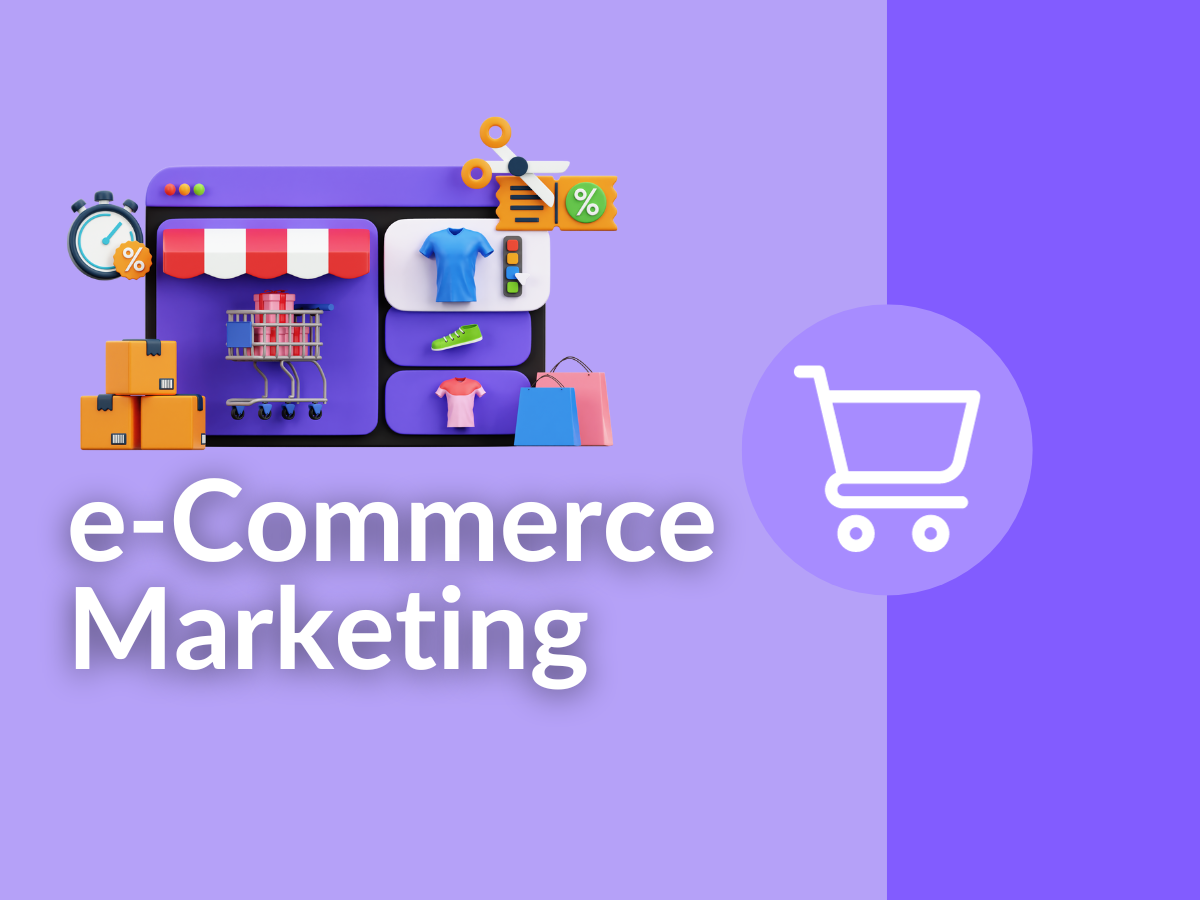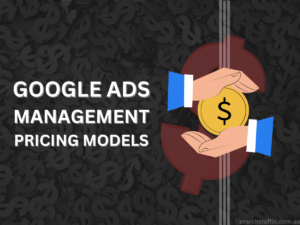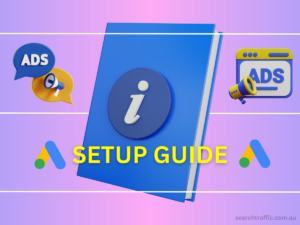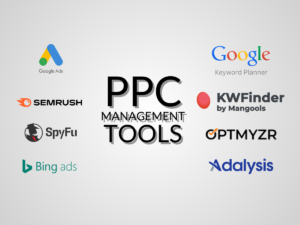Table of Contents
Platforms like Shopify and BigCommerce have simplified the process of launching an online store.
However, the ease of starting a business does not automatically translate into a successful marketing strategy.
This is where the REAL work begins.
E-commerce marketing is all about promoting your products online and driving traffic to your e-commerce store.
With the right e-commerce marketing strategies for your products, you can reach a wider, more ready-to-covert audience and boost your sales.
In this blog post, we are going to cover everything you need to know about e-commerce.
What is e-commerce marketing?
E-commerce marketing is the process of promoting your products or services online and driving traffic to your e-commerce store.
It includes various strategies such as SEO, PPC, social media marketing, email marketing, content marketing, and more.
The goal of e-commerce marketing is to
- increase brand awareness,
- drive traffic to your website,
- and ultimately, boost sales.
With the rise of ecommerce stores, businesses are now focusing more on tailored and personalised ecommerce marketing strategies to stay ahead of the competition.
Ecommerce Marketing Strategy
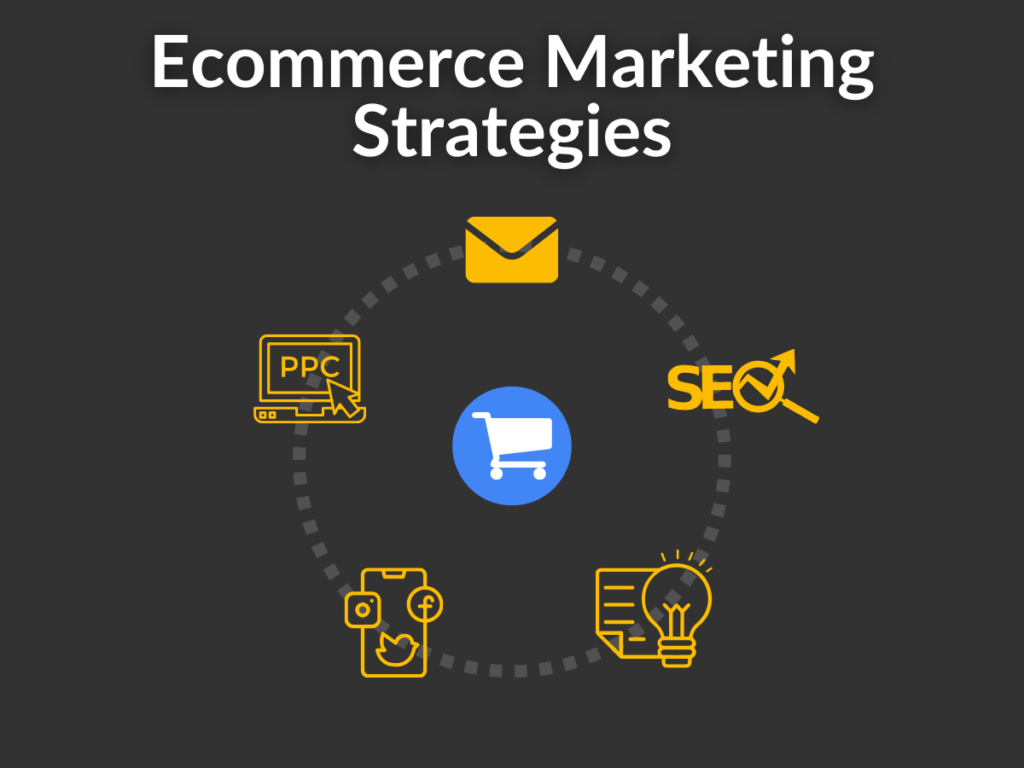
To succeed in ecommerce marketing, you need to have a solid strategy in place. This doesn’t mean using all the tools and strategies listed, but looking at which ones will be most impactful for your business goals.
Here are some common e-commerce marketing strategies:
eCommerce Search Engine Optimisation (SEO)
eCommerce SEO is the process of optimising your website for search engines. By optimising your website, you can rank higher on search engine results pages (SERPs), which will increase your visibility and drive more traffic to your website.

Examples of SEO strategies include:
- Keyword research and optimisation– utilise high-volume keywords in product titles, descriptions, meta descriptions, URLs, and alt tags for images
- Optimising product pages– make it clear, engaging with keyword-rich descriptions
- Creating high-quality, relevant content
- Building backlinks through guest blogging or partnerships
- Optimising your website for mobile because more and more people buy things on their phone
PPC/ Pay-Per-Click Advertising
PPC advertising is a form of online advertising where businesses pay each time a user clicks on one of their ads. It allows you to target specific keywords, demographics, and interests to reach your ideal audience.
Google Search and Shopping Ads allow advertisers to display their ads on Google search results pages and partner websites.

These platforms provide powerful tools for businesses to reach their target audience and drive engagement.
Social Media Marketing
Social media is an excellent platform to promote your e-commerce store if that is where your audience hangs out. What’s more, by creating a social media strategy, you can reach a wider audience and drive more traffic to your website.
Examples of popular social media platforms are:
- Facebook: One of the largest platforms, ideal for building brand loyalty and reputation, targeted advertising, and reaching a diverse audience.
- Instagram: Highly visual, perfect for brands with strong visual content. It’s popular among younger audiences and useful for influencer marketing.
- Twitter: Known for its real-time communication. Great for engaging in trending topics, brand-personality building, and direct interaction with followers.
- LinkedIn: The go-to platform for B2B marketing. It’s ideal for networking, professional branding, and sharing industry-specific content.
- Pinterest: A visual discovery engine, excellent for brands with strong visual appeal, particularly in the lifestyle, decor, fashion, and food sectors.
- TikTok: A rapidly growing platform with a predominantly younger audience. Known for short-form video content, it’s great for viral marketing and brand personality showcasing.
Email Marketing
Email marketing is one of the most underestimated yet effective ways to nurture and convert leads into customers. By collecting email addresses from your website, you can create targeted email campaigns that showcase your products and promotions.
Examples of email marketing strategies include:
- Sending promotional emails to subscribers
- Segmenting your email list based on customer behaviour
- Offering personalised discounts or special deals
Content Marketing
Content marketing involves creating high-quality content that resonates with your audience.
By creating valuable content, you can attract more visitors to your website and ultimately drive more sales.
Examples of content marketing strategies include:
- Blogging about relevant topics and trends in your industry
- Creating informative videos or tutorials
- Offering free e-books or guides to potential customers
- Creating engaging infographics that can help readers “scan” for important information quickly
- Podcasts – to build credibility and following by helping people learn more about a particular topic
Challenges in E-commerce Marketing
While e-commerce marketing can be highly effective, it also comes with its own set of challenges
Competition
With the rise of e-commerce platforms like Shopify and Bigcommerce, the market is becoming increasingly saturated with online stores.
Everyone’s investing in e-commerce marketing.
This means you have to work harder and be better to stand out and attract customers.
Limited resources
With so many platforms and tools available, it can be overwhelming to determine which ones will work best for your business and target audience.
Research is key and understanding where your audience is and what they are looking for is crucial for success.
Changing consumer behaviour
As technology continues to evolve, so does shopping behaviour.
It’s essential to stay up-to-date with trends and adapt your e-commerce marketing strategies accordingly.
Targeting the right audience
With so many platforms and tools available, it can be overwhelming to determine which ones will work best for your business and target audience.
Research is key and understanding where your audience is and what they are looking for is crucial for success.
Tips to Navigate the Challenges
E-commerce marketing is an ever-changing field, driven by technological advances and shifts in consumer behaviour.
To excel in this space, here are five key strategies:
Utilise Personalisation
Personalising the shopping experience on your store can significantly improve customer satisfaction. When customers see products and content tailored to their interests, they’re more likely to make a purchase.
Personalisation fall into several categories:
- Personalised Product Recommendations: AI tools like Limespot use customer behaviour, browsing history, and purchase history data to suggest relevant products. Natural Language Processing (NLP) based AI helps in understanding shoppers’ language and preferences, suggesting items that align with their past interactions.
- Chatbots and Virtual Assistants: Tools like Octane.ai (Shopify) and Tidio offer AI-powered chatbots and virtual assistants that can act as customer service representatives. They help in fielding customer queries, processing orders, providing personalised offers, and even assisting during the checkout process. These tools can enhance customer interactions, collect valuable customer data, and provide round-the-clock service.
- Fraud Detection and Prevention: AI platforms like Signifyd help in detecting and preventing fraud by analysing data, spotting unusual transactions, and monitoring real-time transactions. Machine learning models can create user profiles based on behaviour data to identify and flag fraudulent behaviour.
- Inventory Management: Apps like Inventory Planner, Stocky (by Shopify), or Demand Forecasting apps can analyse your past sales data to forecast future demand
- Dynamic Pricing: Tools like Wiser (Shopify) utilise AI for dynamic pricing, allowing store owners to adjust prices based on real-time user behaviour, market conditions, and competitor pricing. This flexibility helps in optimising sales strategies across different sales channels.
- Generative AI: This involves using AI systems like ChatGPT and DALL-E to generate marketing content and tailor it to different customer segments. This can include creating customised marketing emails or developing brand messaging that resonates with targeted customer personas.
Mobile Optimisation
Ensure your website is mobile-friendly with responsive design, fast load times, and simple navigation, including features like one-click ordering and mobile wallets.
How?
- Choose a Responsive Theme: Whether it’s Woocommerce or Shopify, there are always themes that are optimised for mobile. Make sure to select one that adjusts seamlessly to different screen sizes.
- Test Load Times: Use tools like Google’s PageSpeed Insights to check your site’s loading speed and implement their recommendations to improve performance.

- Simplify Navigation: Organise your menus and categories to be easily navigable on a smaller screen. Minimise clicks and scrolling required.
- Optimise Images and Videos: Ensure your images and videos are optimised for mobile. This means they should be high quality but not so large that they slow down page load times.
- Implement Mobile-Friendly Checkout: Shopify’s default checkout is already mobile-optimised. Ensure that it is streamlined, supports multiple payment methods, and allows for guest checkouts. If it’s WooCommerce, make sure you get a developer who understands what plugins to use.
Test Your Site: Regularly test your website on various mobile devices to ensure everything functions correctly. Just take out your own mobile phone and view your site.
Omnichannel Marketing
Omni-what?
Think of omnichannel marketing as the Swiss Army Knife of retail – it’s all about being ready for anything, everywhere.
Just like a Swiss Army Knife is equipped for various tasks, omnichannel marketing prepares your brand to interact with customers seamlessly across all platforms, whether it’s your website, social media, products in physical stores, or online marketplaces.
So the idea is to create a seamless customer experience across all platforms, including your website, social media, physical stores, and online marketplaces.
- Unified Inventory and Product Information: Ensure your inventory and product information is consistent across all platforms. Shopify can integrate with various sales channels like Amazon, eBay, or physical stores. Use Shopify’s centralised system to manage inventory and keep product information, pricing, and availability updated in real-time.
- Consistent Branding and Messaging: Your website, social media, emails, and physical store should all have a consistent look and feel. Use similar themes, colours, and messaging across all platforms to reinforce your brand identity.
Analytics and Feedback: Shopify’s default analytics tools are good – but use Google Analytics 4 to track the performance of your omnichannel strategy. Monitor customer feedback across different channels to identify areas for improvement.
Social Media
Transform social media platforms into sales channels with shoppable posts, influencer partnerships, and targeted advertising.
- Shoppable Posts and Tags: Integrate your Shopify store with platforms like Instagram and Facebook to create posts where customers can click and buy products directly.
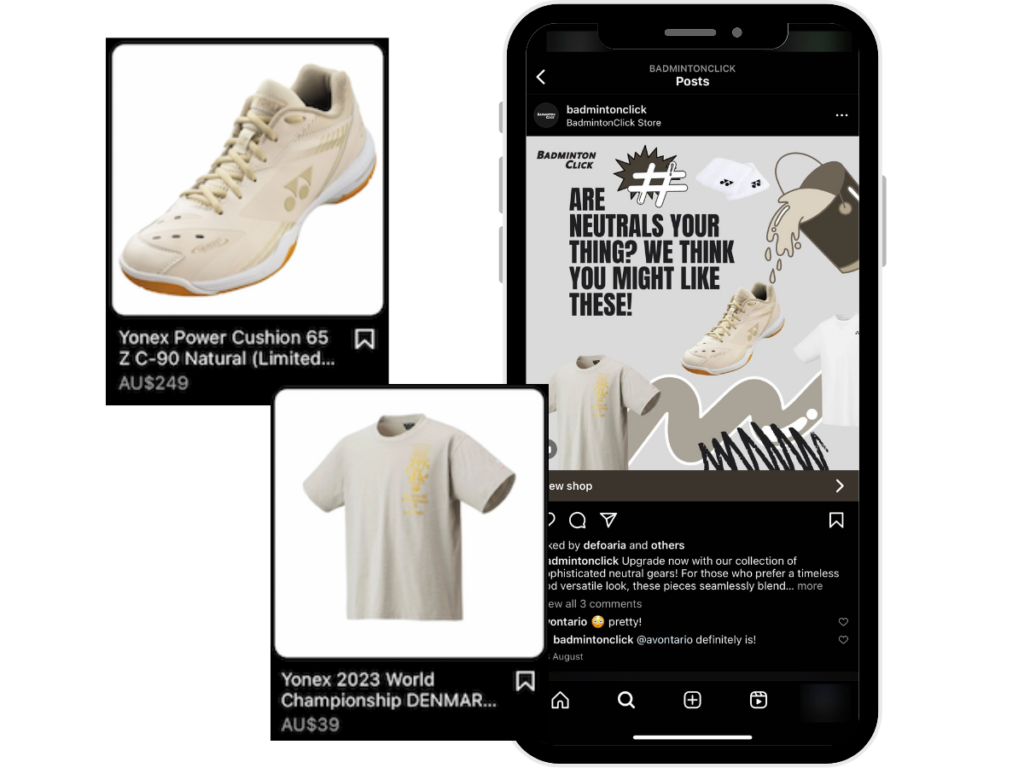
- Influencer Partnerships: Collaborate with influencers who align with your target market to showcase your products, using either a paid or commission-based model.
- Targeted Advertising: Use the advertising tools on platforms like Facebook and Instagram to create ads targeting potential customers based on specific interests and behaviours.
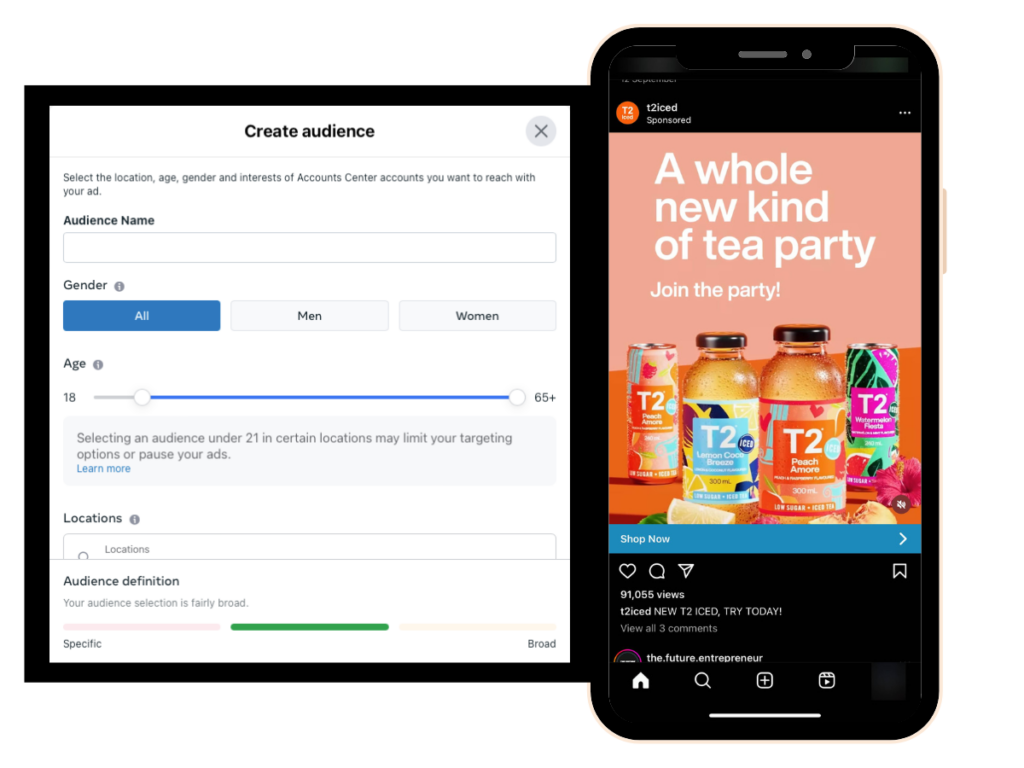
Customer Experience and Retention
Focus on retaining customers through loyalty programs, excellent service, and regular engagement, turning satisfied customers into brand advocates.
- Loyalty Programs: Implement and customise a loyalty program using Shopify apps such as Smile.io, Yotpo, or LoyaltyLion, offering rewards for various customer actions like purchases, referrals, and social media engagement.
- Customer Service: Enhance customer support by using live chat apps such as Zendesk, training your team for responsiveness, and including a comprehensive FAQ section on your site.
- Email Marketing: Leverage email marketing apps like Klaviyo to send personalised emails for different scenarios and segment your email list for targeted communication.
- Feedback and Reviews: Collect customer feedback through post-purchase surveys and display product reviews using apps like Judge.me or Yotpo, using this feedback to improve your offerings.
Implementing these strategies involves a deep understanding of your audience and the agility to adapt to market changes, ensuring your ecommerce marketing approach remains customer-centric, data-driven, and up-to-date.
Remember, a successful ecommerce marketing strategy is customer-centric, data-driven, and continuously evolving.
Conclusion
E-commerce marketing is a vital aspect of running a successful online business.
It is important to have a solid ecommerce marketing strategy in place to stay ahead of the competition.
By using strategies like eCommerce SEO, PPC, social media marketing, email marketing, and content marketing, you can promote your ecommerce store and drive more traffic to your website.
If you need a bit of support getting started, enlist the help from eCommerce marketing experts.

